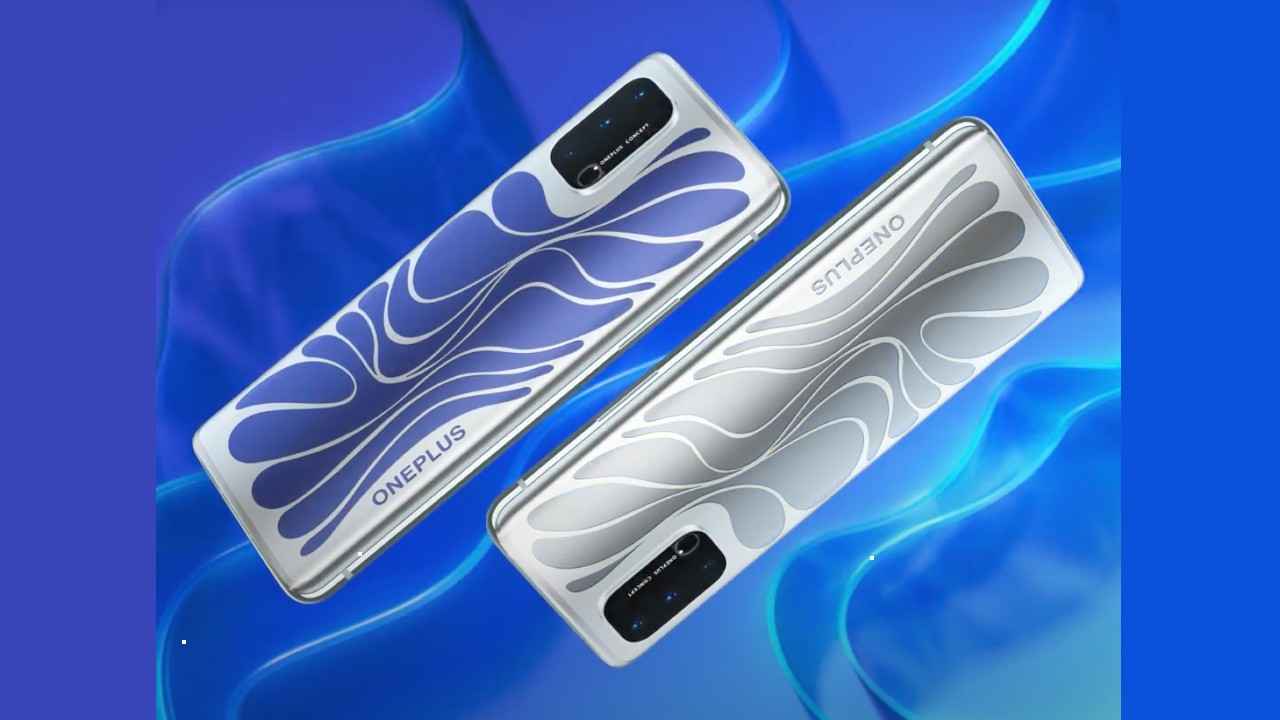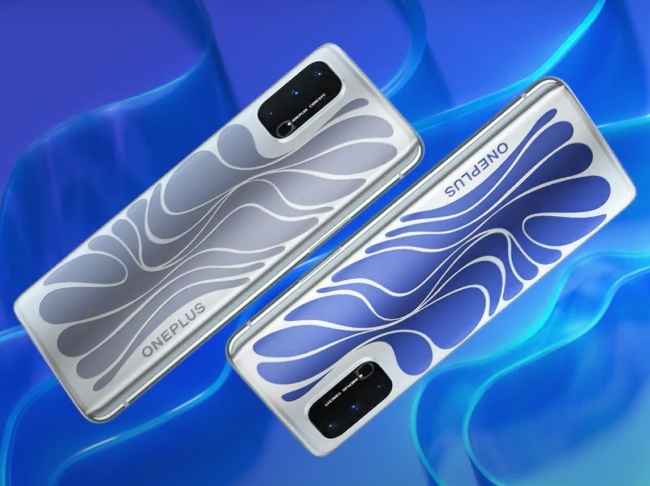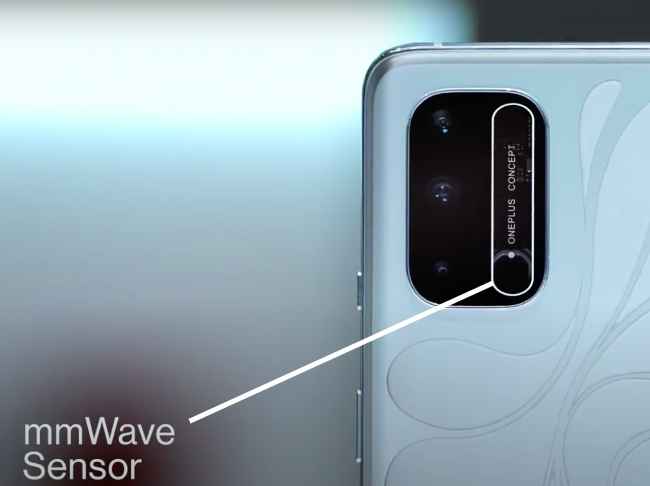OnePlus 8T Concept shows off future of material design
OnePlus today showcased its second concept smartphone called the OnePlus 8T Concept.
It touts a colour-shifting back glass that changes colour from a dark blue to a light silver.

OnePlus launched its first concept smartphone – the Concept One – based on the OnePlus 7T Pro at CES 2020. The smartphone touted of a unique design and one of its kind disappearing camera aided by its electrochromic glass. The company today showed a new OnePlus 8T Concept, it's second concept device.
 Survey
SurveyThe OnePlus 8T Concept is designed by 'OnePlus Gaudi', a team of 39 designers based in Shenzhen, Taipei, New York and India, who work towards combining art and technology to enhance user interaction in a certain way. The new concept is an alternative version of the 8T that is said to "blend organic design with industrial design."
OnePlus 8T Concept brings interactive colour changing back
For the 8T Concept, OnePlus says it uses "a combination of natural design inspiration and advanced technologies to create a more natural interaction between users and the device." And the company tries to prove just that with the new concept.
When they say natural design inspiration, it means the idea behind this concept comes from natural designs inspired by hot springs of Pamukkale, Turkey. To achieve the feel of those silvery-white travertine landscapes and warm, blue pools of Pamukkale, the team has used Electronic Color, Material and Finish (ECMF) once again.
The use of ECMF was first seen on the OnePlus Concept One. To explore material design beyond static materials, the company had started working with materials with dynamic properties that can be tuned as per the need and eventually adds to the functionality of the device.
For the 8T ECMF, that ECMF has taken the form of a colour-shifting film containing metal oxide in glass, the valence state of the metal ions varying under different voltages. So, when the metal oxide activates, the colour of the glass changes from a dark blue to a light silver as you can see in the picture below.
While ECMF alone adds colour-shifting back, combined with mmWave, the design becomes functional. ECMF and mmWave combine to make a reactive sensing technology based on the working principle of 5G. The mmWave radar module in the back transmits and receives electromagnetic waves. The digital signal processing (DSP) and CPU process signal and information, allowing the device to perceive, image, locate, and track objects when an electromagnetic wave is received.
Is the concept really useful?
From what we can perceive and see from the demo videos, it's majorly a material and design innovation that looks like a conversation starter but not something substantial or life-changing as of now. However, OnePlus highlights a few uses for Reactive Sensing that include touchless notifications and breathing monitor.
Touchless notifications is essentially a possible feature in which ECMF could flash colours for an incoming call, and users could wave their hand over the mmWave sensor to silence, accept or reject calls.
The other one is breathing monitor that could use the mmWave technology to register a user’s breathing from a distance and change the colour of the back in sync to use the phone a biofeedback device.
It's the first step towards a technology that might become commercially available after a few years. Concepts are generally developed to showcase and highlight technological innovations and its possibilities. Hence, we're not sure if and when these technologies will make it to market in the future. Although rumours of a Vivo smartphone with colour-changing back had surfaced in September, it's still unknown whether it's a commercial smartphone or a concept.


